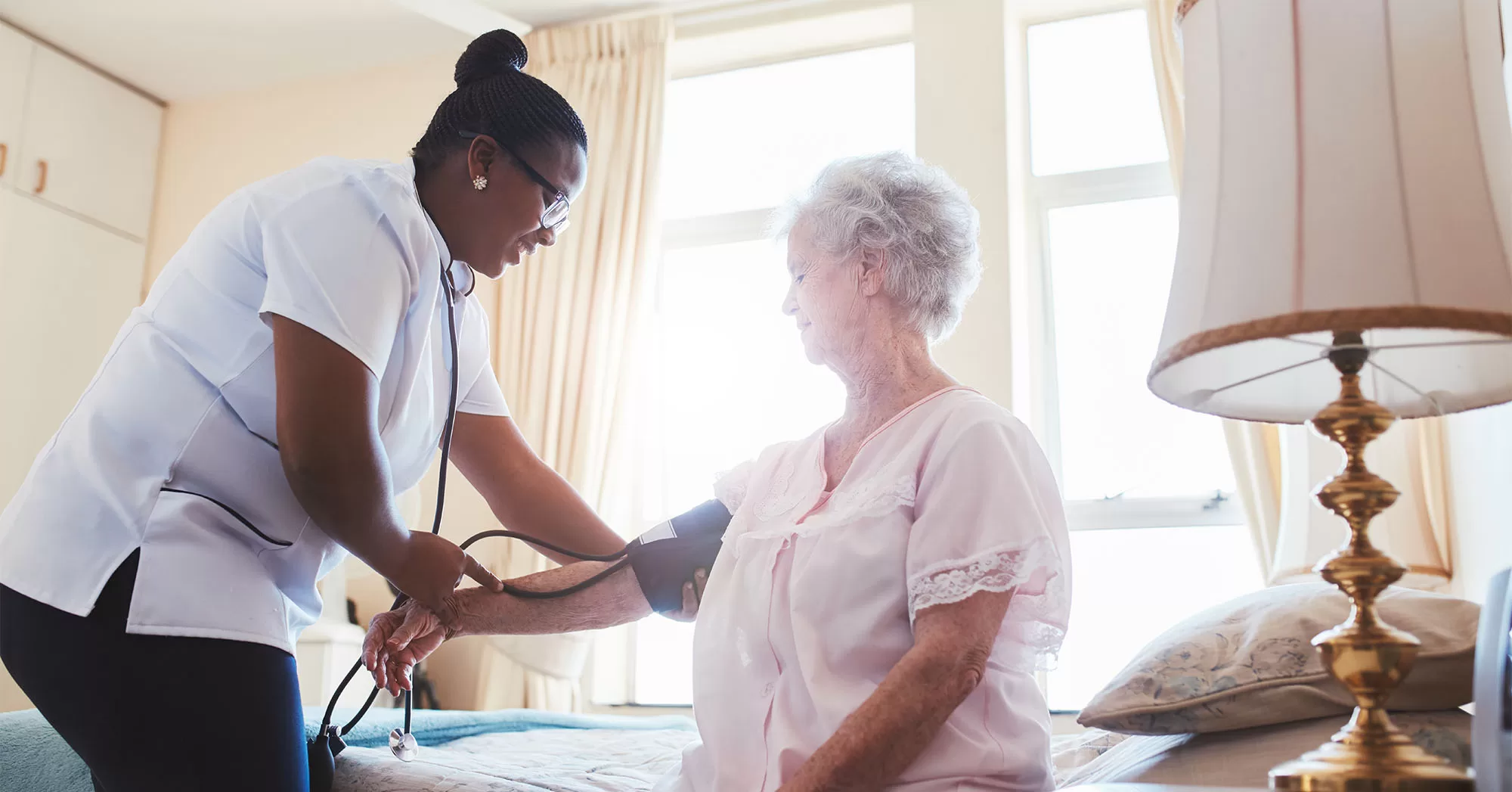Caught between the hefty demands of work, family, and society, women often neglect or give up on pursuing a healthy lifestyle. However, the consequences of doing so can be serious. When women cannot take care of their health, hereditary illnesses can catch up to them sooner, and with more severity. This Women’s Health Month, and always, it is extremely important for all women and girls, especially those with underlying health conditions, and women 65 years and older, to take care of their health.
During Women’s Health Month, we encourage women to get in touch with their doctors for a full medical check-up. It’s also a great time to learn the steps needed to treat an illness. Timely medical intervention can not only save one’s health from deteriorating further, but also detect illnesses that may have been overlooked. With its warmer temperatures, May is also the perfect month for women to focus on taking better care of themselves and live a healthier, more active lifestyle that they deserve!
What health issues are women more prone to?
Throughout history, the central role of women in society has ensured the stability, progress, and long-term development of civilization. Women are statistically the primary caregivers of children and elders in every country of the world. They play the largest role in decision-making about family meal planning and diet, and they play a crucial role in shaping the values and beliefs of future generations.
While both men and women contract various conditions, some health issues affect women differently and more commonly. Biological makeup impacts proneness to certain health concerns. Women have a unique set of health challenges and are at higher risk of developing certain conditions and diseases than men. Women suffer higher rates of heart attack deaths compared to men, and depression and anxiety present themselves more frequently among women.
In some cases, doctors don’t have a ready explanation for why certain diseases are more common in one sex than in another. In others, doctors conclude that the answer is complex, with genetic, physiological, and hormonal factors at play. Regardless of the underlying cause, the fact remains that women are disproportionately impacted by the following health conditions:
- Breast cancer: Breast cancer is the most aggressive cancer affecting the global female population. It can spread to other organs, so it is important for women to conduct regular self-checks for lumps and have their breasts regularly checked by a healthcare provider.
- Ovarian and cervical cancers: Cervical cancer originates in the lower uterus, while ovarian cancer starts in the fallopian tubes. While both conditions cause similar pain, cervical cancer also causes discharge and pain during intercourse. People with female reproductive systems should monitor their reproductive health and report any changes to their physician and/or OB/GYN.
- Heart disease: In the United States, heart disease causes one in every four deaths among women. Only 54% of women realize that heart disease is the top health condition threatening members of their sex.
- Gynecological Health: New or unusual symptoms during menstruation, such as bleeding between cycles and frequent urination, may indicate potential issues and health conditions. Vaginal issues could also indicate serious problems such as sexually transmitted diseases (STDs) or reproductive tract cancers. If left unchecked, they can lead to conditions such as infertility, kidney failure, and even death.
- Pregnancy issues: Pregnancy can cause anemia (red blood cell count drop) or induce depression or gestational diabetes. Another problem arises when an ectopic (tubal) pregnancy occurs. Pre-existing conditions can also worsen during pregnancy, threatening the health of both parent and child.
- Autoimmune diseases: Autoimmune diseases occur when cells that eliminate threats, such as viruses, attack healthy cells. As these conditions continue to increase in prevalence among the general population, researchers remain unsure as to why they affect women predominantly.
- Allostatic stress load: Allostatic load represents the ‘wear and tear’ of stress on the brain and body that may differ between men and women. Women show gender-specific variation for numerous factors such as age, race/ethnicity, social support, and health behaviors that influence associations between allostatic load and mental health. Black women show the highest and second highest probability of high allostatic load scores and the highest excess scores compared to men and white women.
Worrying about health concerns can be overwhelming. With most of these health issues, a healthy lifestyle will go miles toward helping prevent health problems.
Health inequalities faced by women
The education and empowerment of women has a positive impact on their children’s education, health, and social development. It is important for women to be educated about ways to sustain their health.
The contribution of women is everywhere, and the importance of women in our society cannot be overstated. That’s why this Women’s Health Month we urge women and those with women they love in their lives to pay extra attention to their health, beware of the conditions women are more prone to, and take precautionary measures to ensure a healthier life.
Additionally, many women’s health conditions go undiagnosed and most investigational drug trials do not include female test subjects. Some of the sociocultural factors that prevent women and girls from benefiting from quality health services and attaining the best possible level of health include:
- unequal power relationships between men and women: Gender inequality disproportionately affects women and girls. In most societies, they have lower status and have less control over decision-making about their bodies, in their intimate relationships, families and communities, exposing them to violence and harmful practices. Women and girls face high risks of unintended pregnancies, sexually transmitted infections including HIV, cervical cancer, malnutrition and depression, amongst others. Gender inequality also poses barriers for women and girls to access health information and critical services, including restrictions on mobility, lack of decision-making autonomy, limited access to finances, lower literacy rates and discriminatory attitudes of healthcare providers.
- a disproportionate focus on women’s potential reproductive role: Racial/ethnic disparities in reproductive health access, services, and outcomes are observable in differences in rates of PAP smears, mammograms, maternal mortality, and unintended pregnancies. Closing these long-standing gaps requires heightened awareness and strategy to increase contraceptive access, prevent maternal deaths, and decrease HIV infections within the population.
- potential or actual experience of physical, sexual, and emotional violence: The trauma induced by physical, sexual, and emotional violence is associated with short-term and long-term psychological consequences. Short-term effects include shock, fear, anxiety, confusion, and withdrawal. Many survivors experience a reduction in symptoms within a few months, whereas some women experience distress for years which can lead to increased smoking, substance use, and risky sexual behaviors.
How can women prevent these health issues and health problems in general?
For women, preventive care is a sure path to improved health and the prevention of health concerns that disproportionately impact women. Every woman should have a well-woman visit at least once a year. A well-woman visit is an annual preventive care appointment. It allows the doctor to review a woman’s medical history, assess their risk for certain diseases, suggest immunizations, and discuss healthy lifestyle changes. Some questions women should ask their doctors during these visits include:
- Should I have a PAP smear during my annual gynecological exam this year?
- Are all of my immunizations up to date?
- Do any of my prescriptions need to be renewed before my next annual exam?
- Is there anything more I can do to prevent cervical cancer?
- Do I need to make any lifestyle changes to help prevent STDs?
During the appointment, the doctor should assess the woman’s risk for conditions like heart disease and should ask about exercise, diet, and smoking. Some preventative measures that can be taken to avoid the conditions exclusively associated with with women include:
- Breast health- Women should have mammogram screenings every other year, especially those ages 50-74. A doctor can ultimately decide when is the best time to start.
- Reproductive health- Beginning at the age of 21, most women should be getting a regular cervical cancer screening, called a PAP smear. The frequency of the test depends on age and other risk factors.
- Immunization- The The American Academy of Family Physicians (AAFP) recommends vaccinations for adults who meet age requirements, lack documentation of prior vaccinations, or who have no evidence of past infection, including a flu shot each year, a tetanus booster every 10 years, human papillomavirus vaccine (2 or 3 doses depending on age at initial vaccination), and more.
- Blood work- Standard blood panels will check cholesterol levels, which may be helpful in the prevention of heart disease and adverse cardiac events. If a woman is found to have a higher risk of heart disease, early intervention could help prevent or delay this from occurring.
Conclusion
The best thing women can do for their health is keep an open line of communication with their doctor about their risks for disease and find out the best way to give their health a boost. This year, take a step towards bettering women’s health and their place in society by getting informed about the issues most important to them. All women can celebrate women’s health month this year by going for a check up, making healthier choices, and taking care of their mental health.









